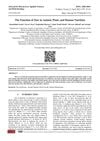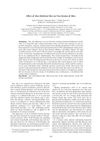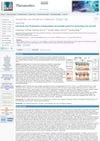The Relationships Between Ruminal Juice, Urine, Serum, and Fecal Zinc in Experimentally Zinc Deficient Ossimi Lambs

TLDR Zinc levels in body fluids can help diagnose zinc deficiency in lambs, with fecal zinc as an early indicator.
This study evaluated the relationships between ruminal juice, urine, serum, and fecal Zinc (Zn) concentrations in 15 experimentally Zn deficient Ossimi lambs. The lambs were divided into two groups: 10 for Zn deficiency induction and 5 as controls. Over 12 weeks, Zn levels were measured biweekly. Zn deficiency led to alopecia, skin abnormalities, loss of appetite, and emaciation by the 6th week. Significant decreases in Zn concentrations in serum, ruminal juice, feces, and urine were observed from the 8th, 10th, 6th, and 8th weeks, respectively. Decreases in ALP and SOD were also noted. Positive correlations between serum Zn and other body fluids were found, suggesting that Zn levels in these fluids can serve as diagnostic tools for Zn deficiency, with fecal Zn being a potential early biomarker.



